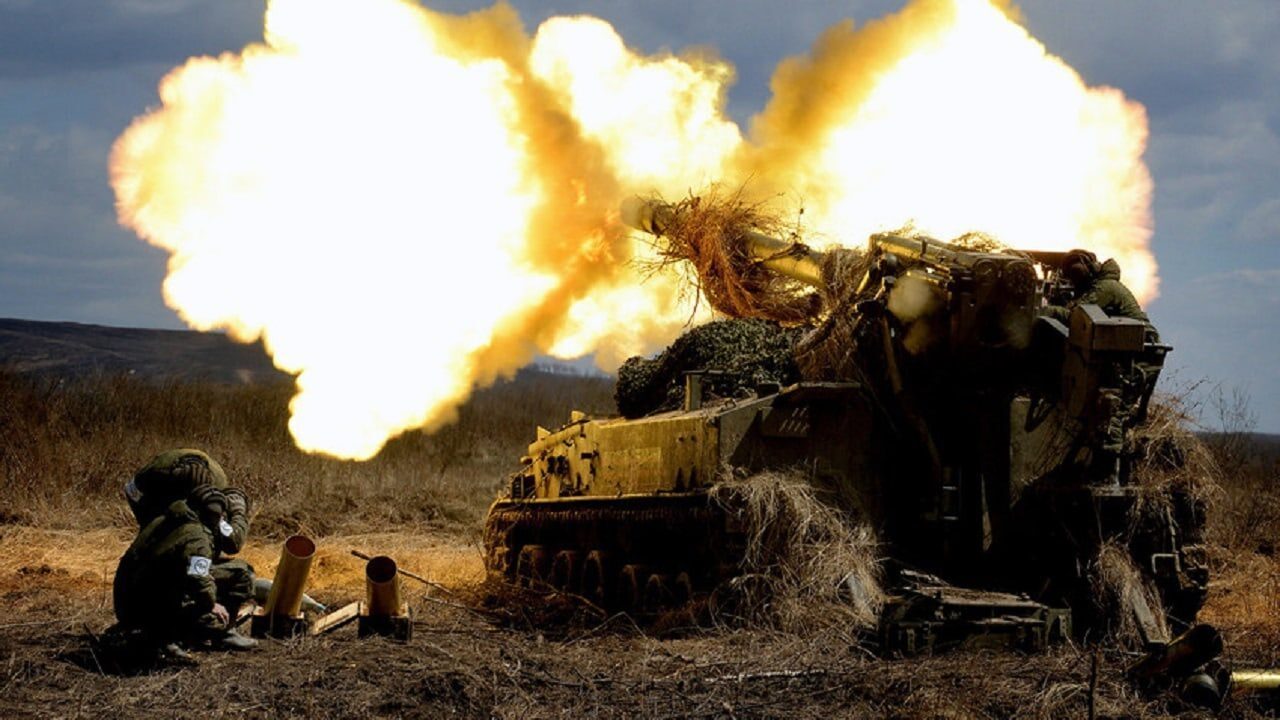Is Russia winning or losing in Ukraine? On day 110 of the Russian invasion of Ukraine, the Russian military is still looking for a breakthrough in the Donbas. Russian forces are pursuing three axes of advance but have failed to achieve victory in any of the three, though they have been making gains, especially in the direction of Severodonetsk.
Fighting in the Donbas
The fighting in the Donbas continues and is especially focused in and around Severodonetsk. The Russian forces have captured most of the strategic Ukrainian city but have failed to completely clear it from the Ukrainian defenders.
“In the Siverodonetsk direction, the enemy, with the support of artillery, carried out assault operations in the city of Siverodonetsk, had partial success, pushed our units away from the city center, and hostilities continue,” the Ukrainian Ministry of Defense stated.
Although most of the fighting in concentrated in the vicinity of Severodonetsk, the Russian military is pursuing two additional axes of advance in the Donbas.
In the north (and northwest of Severodonetsk), the Russian forces are pushing from Izium toward Slovyansk. However, this axis of advance has remained largely stalled over the past few days as Russian forces have been concentrating most of their efforts in Severodonetsk.
“In the Slovyansk direction, enemy units focused their efforts on storming the settlements of Dolyna and Bohorodychne, but were unsuccessful. The enemy, as part of the logistics of troops, replaced more than 100 units of damaged armored vehicles,” the Ukrainian military stated.
In the south (and southwest of Severodonetsk), the Russian forces are pushing from Donetsk toward Bahmut. Moscow would like to connect the two axes in order to cut off the Ukrainian forces in Severodonetsk but has far been unable to.
“In the Donetsk direction, the occupying forces are focusing on offensive operations to encircle our troops in the areas of Siverodonetsk and Lysychansk, and to block logistics routes from Bakhmut. Continues [sic] measures to replenish losses. It moved more than 80 weapons and military equipment, including heavy armored vehicles and artillery systems, to the settlements of Kreminna and Starobilsk,” the Ukrainian Ministry of Defense stared.
The Ukrainian Ministry of Defense claimed that as of Monday, Ukrainian forces have killed approximately 32,300 Russian troops (and wounded approximately thrice that number), destroyed 213 fighter, attack, and transport jets, 178 attack and transport helicopters, 1,432 tanks, 718 artillery pieces, 3,492 armored personnel carriers, 226 Multiple Launch Rocket Systems (MLRS), 13 boats and cutters, 2,460 vehicles and fuel tanks, 96 anti-aircraft batteries, 585 tactical unmanned aerial systems, 53 special equipment platforms, such as bridging vehicles, and four mobile Iskander ballistic missile systems, and 125 cruise missiles shot down by the Ukrainian air defenses.
Ukraine: It’s All About Bridges
In its daily estimate of the war, the British Ministry of Defense focused on the situation on the Donbas and its particular terrain that requires potent river-crossing capabilities.
“Over the weekend, the battle around Sieverodonetsk has continued to rage. Over the coming months, river crossing operations are likely to be amongst the most important determining factors in the course of the war,” the British Military Intelligence assessed.
One of the main geographical features of the fighting in the Donbas right now is the Siverskyy Donets River, also known as the Donets, which is the largest river in Ukraine. The river runs through the battlefield, and the Ukrainian forces have used it expertly to bolster their defenses.
“The key, 90km long central sector of Russia’s frontline in the Donbas lies to the west of the Siverskyy Donets River. To achieve success in the current operational phase of its Donbas offensive, Russia is either going to have to complete ambitious flanking actions, or conduct assault river crossings,” the British Ministry of Defense added.
However, the Russian military has displayed very poor river-crossing capabilities. When three Russian battalion tactical groups tried to cross the Siverskyy Donets River last month, they lost approximately 80 tanks, armored personnel carriers, and infantry fighting vehicles in addition to scores of troops, and all without succeeding.
“Ukrainian forces have often managed to demolish bridges before they withdraw, while Russia has struggled to put in place the complex coordination necessary to conduct successful, large scale river crossings under fire,” the British Military Intelligence stated.
Complicating things further for the Russian military is the fact that it has been destroying Ukrainian bridges in the west of Severodonetsk in an attempt to cut off the Ukrainian supply lines that are feeding the resistance in the city with men and hardware.
1945’s New Defense and National Security Columnist, Stavros Atlamazoglou is a seasoned defense journalist specializing in special operations, a Hellenic Army veteran (national service with the 575th Marine Battalion and Army HQ), and a Johns Hopkins University graduate. His work has been featured in Business Insider, Sandboxx, and SOFREP.

